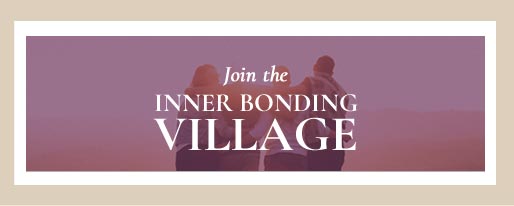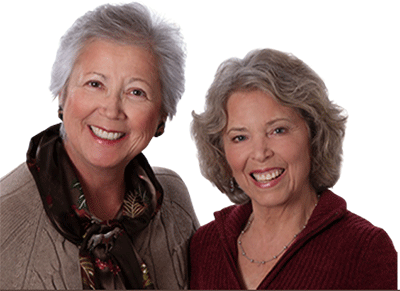The Wounded Self as Ally
By Karen Kral, M.A., LPCCJune 16, 2009
Do you struggle with your Wounded Self, believing that "if only" you could get rid of this part of you, everything would be alright? Then, read this article about opening to aspects of your Wounded Self as friends and helpers on your journey toward healing. You may be surprised how valuable your Wounded Self may be after all.
The Wounded Self as Ally, Part I
by Karen Kral, M.A., LPCC
In Inner Bonding, the Wounded Self is the part of us that decided very early in life that the world is unsafe and that it is his or her job to create some sense of order, understanding and normalcy, through strategies of protection and control. To defend against loneliness and helplessness that are inevitable in an unsafe world or family, this conditioned part of us habitually chooses protection and control over love. When we think of the Wounded Self, we don't usually consider this part of us to be a "willing participant" in our healing work, but instead, the part of us that attempts to block and sabotage our personal development. It is the "ego" that wants to do it all by itself and not accept the presence and accessibility of a higher power. It is the "addict" that believes "numbing" is always preferable to "feeling".
Is the Wounded Self then simply a force within us to which we must always be in opposition? Or, is it possible to find facets or "openings" in the Wounded Self that enable us to forge an alliance and move toward healing together? By definition, the Wounded Self is in the intention to control, and is therefore, never "ready to grow". And yet, I have found that it is possible to "chip away" at the armor of the Wounded Self and to find "pieces" that, when approached in a supportive way, are ready to join with the Loving Adult part of us to seek healing and transformation. These parts of us - that exist in the gray area between the totally unwilling Wounded Self and the Loving Adult - can become allies on our journey toward self love. Here's how.
We start by using Inner Bonding to discover the "very good reasons" for the thoughts and behaviors of the Wounded Self and to open to the gifts it has given us - like helping us to survive. When I ask my Wounded Self what her "very good reasons" are for engaging in an unhealthy behavior or thought pattern, an opening is created and a discussion takes place. My Wounded Self tells me why she is angry or why she can't seem to stop compulsively cleaning the house. If I ask her where she learned to compulsively clean, she might bring up a memory from childhood and remind me of something painful. In touching that pain, I may be able to empathize with my Wounded Self and tell her how sorry I am that she had to go through that. This can be the start of a close and beneficial relationship with the Wounded Self. And yet, if we stop here, only seeing our Wounded Self as a source of information and as someone who helped us out in the past, we might just be missing something. If I say, "This behavior is not working anymore and I'm going to restrain you" from an intention that is purely "loving restraint" then this action may be effective. However, if we have a sense that we just can't "deal" with our Wounded Self, and that we are in some way trying to "power over" this part of us, we will notice that the Wounded Self will just pop back up again and again in a sort of battle of the wills. An alternative to this struggle is to "make friends" with the Wounded Self. By opening to rather than resisting the Wounded Self, and by being willing to seek out the "health" in this part of us, we enable something entirely new to emerge. Over time, parts of us that were initially identified with the Wounded Self gradually find identification with our health and become allies on the road to growth.
One way that we may foster a deeper relationship with our Wounded Self is through the use of our imagination. Just as we use our imaginations to open to the fullness of our inner child - all aspects of her personality including her hurt, her joy, her dreams, and her quirkiness; all the ways in which we have scared and hurt him; all of the false beliefs we have imbedded into her fragile mind - it is possible to use our imaginations to access various levels and facets of the Wounded Self.
What does your Wounded Self look like? Is her hair purple? Do his pants come down below his knees? Does she "flip you off" whenever you say you want to talk to her? Does he put his headphones on and act like he can't hear you? Is she holding a clipboard with all the things she needs to "take care of" and seem annoyed that you are trying to butt in to the plan she has all figured out? Is he criticizing and bullying you into becoming the man he thinks you need to be for him to get sex, love, approval and enough money to buy that hot sports car? Really allow the image of your unique Wounded Self to be painted on the canvas of your mind right now. What is she wearing? What mood is he in? What is she trying to control? Where does he believe his love and safety come from?
Just as we ask our Inner Child, "What do you need from me?", we can ask or imagine what our Wounded Self may need from us. Is she really scared underneath that anger? Does he need a sense of purpose? When I get in touch with the needs of my Wounded Self, I notice that she frequently wants things that teenagers want: respect, autonomy, and understanding. What if I actually gave these things to her? What if I didn't take these things away from her but actually gave them to her in a healthy and loving way as I would with an adolescent? This is the experiment I began with my Wounded Self a long time ago, and the result has been the development of a positive alliance between the parts of my Wounded Self that are ready to grow and my Loving Adult.
Today, ask your Wounded Self, "If you didn't have to spend all this time and energy protecting us, what would you want to do? How would you like to spend your time if there wasn't a "threat" out there?" Encourage your Wounded Self to seek a positive answer. For example, if he says, "If I didn't have to work all the time, I'd like to go be with my friends and smoke pot", then you know you haven't gotten to his "true" desire. Probe more. When, with your assistance, your Wounded Self arrives at an answer that aligns with the Loving Adult's vision of health and well-being, find a way to make this goal possible. When finances, time or distance are in the way of practically bringing your Wounded Self to the activity she desires, it is possible to create the event or activity in your imagination. Spend time with your Wounded Self allowing this part of you to engage in the activities and interests that may have developed many years ago if there hadn't been such a desperate need for safety and protection. With time, as you show up as the Loving Adult, your Wounded Self will begin to feel safer engaging in healthy activities and be more willing to let go of the control she thought she had to maintain. As this happens, "layers" of your Wounded Self will begin to peel away. With continued attendance from the Loving Adult, these peels from your Wounded Self will become the compost for the process of alchemy that makes flowers grow and happiness bloom in the garden of your heart.
Stay tuned for Part II of The Wounded Self as Ally, where I offer eight creative ways to empower your Wounded Self into taking an active role in your healing process.
This article was written by Karen Kral, M.A. LPCC. Karen is licensed psychotherapist in New Mexico and Colorado (LPC) and is a certified facilitator of Inner Bonding. She offers intensives in the Santa Fe, New Mexico area. You may view her biography under "Facilitators" and visit her website at http://www.corequestpotential.com/
 Send this article to a friend
Send this article to a friend  Print this article
Print this article  Bookmarked 15 time(s)
Bookmarked 15 time(s)
| Related Articles |
|---|
| Love and the Wounded Self |
| Love Includes Everything (or today is the day I don't go to war with myself) |
| Our Wounded Parts are Not Wrong: Learning to Love Ourselves |
Comments
| Author | Comment | Date |
|---|---|---|
| Join the Inner Bonding Community to add your comment to articles and see the comments of others... | ||

Daily Inspiration
The challenge on the spiritual path is to reach such a deep place of inner security that we are able to stay open to learning with ourselves and with Spirit, no matter what. This means being able to be loving to ourselves in the face of others attacking, blaming, crazymaking, withdrawing. It means staying open to learning with Spiritregarding our own highest good and the highest good of all, no matter what.
By Dr. Margaret Paul

 Share with Del.icio.us
Share with Del.icio.us Share with Digg
Share with Digg






